Challah
This post may contain affiliate links. Read my full disclosure policy.
With its rich, slightly sweet flavor, shiny golden crust, and pillowy interior, challah isn’t just for the Jewish holidays — it appeals to everyone, any time!
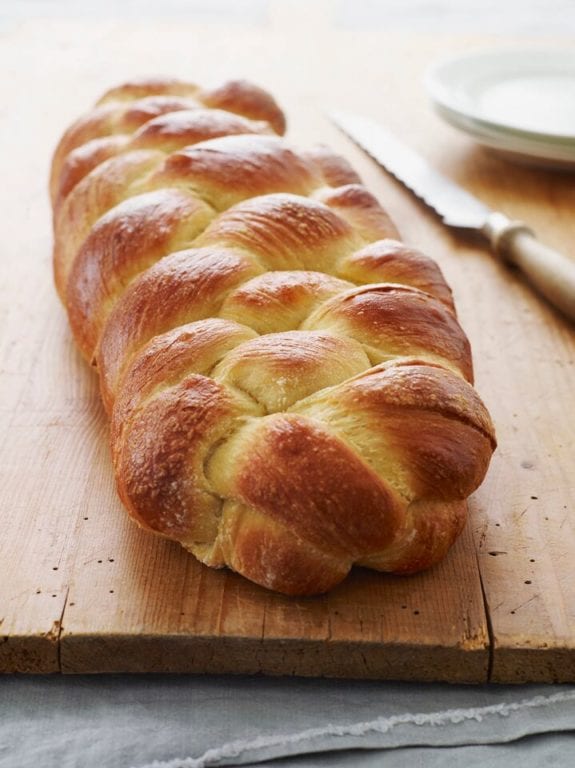
Photo by Alexandra Grablewski (Chronicle Books, 2018)
Challah is the bread of celebration in Jewish tradition, but I put it in the matzo ball soup and bagel category: it appeals to everyone. It’s a rich, slightly sweet loaf with a shiny, golden crust and pillowy-soft interior. But what makes it truly special is its distinctive braid, which symbolizes, among other things, the joining together of family and friends. Rest assured, challah looks like far more trouble than it actually is. Think of it as a once-in-a-while baking therapy project. Kneading and braiding the dough, smelling the challah baking in the oven—it really is satisfying. And when the long braided loaf is presented at the dinner table, it is a sight to behold!
I owe much of the credit for this recipe to Nanci Hirschorn, one of my lovely readers, who has been perfecting her challah recipe for over thirty-five years. Thank you, Nanci, for all the pointers! Heads up: this recipe makes one 16-in loaf. It’s huge! If you have leftovers, use it to make French toast.
Challah is part of my yeast bread collection, which includes other enriched bread recipes, like brioche and babka—rich-tasting breads with a higher proportion of eggs, sugar, butter, and milk—as well as classics like no-knead artisan bread, focaccia, dinner rolls, and naan.
Table of Contents
What You’ll Need To Make Challah
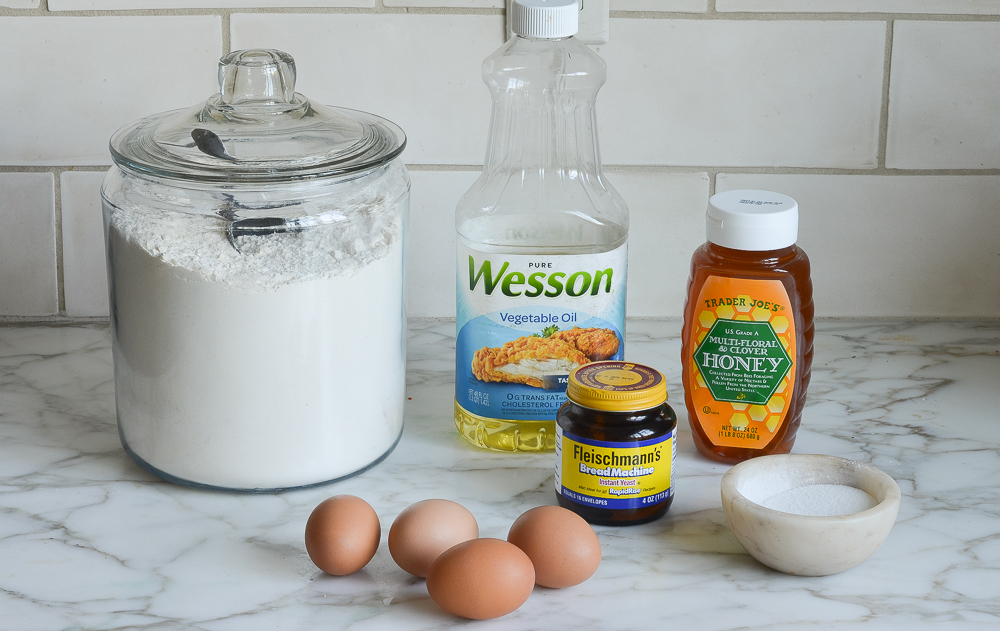
- All-purpose flour: Provides the structure and body of the challah, forming the base of the dough.
- Instant/rapid-rise yeast: Acts as the leavening agent, helping the dough to rise and giving the bread its light and airy texture. Note that this type of yeast rises faster than regular active dry yeast. Yeast is sold in jars (as pictured) or individual packets. If you don’t do a lot of bread baking, it’s best to buy the packets; just note that the quantity required for this recipe (1 tablespoon) is more than one packet.
- Salt: Enhances the flavor
- Lukewarm water: Hydrates the flour, activates the yeast, and helps bind the ingredients together to form the dough.
- Vegetable oil: Adds richness and moisture to the bread, contributing to its soft and tender crumb.
- Honey: Sweetens the dough and adds moisture, while also contributing to the flavor and helping with browning.
- Eggs: Provide richness, moisture, and structure to the dough, giving the challah its characteristic golden color and tender texture. Be sure your eggs are room temperature; this dough is slow to rise and cold eggs will slow it down even further.
- Jump to the printable recipe for precise measurements
How To Make Challah
Step 1: Make The Dough
Begin by combining the lukewarm water, oil, honey, 2 of the eggs, and the egg yolk; whisk well and set aside.
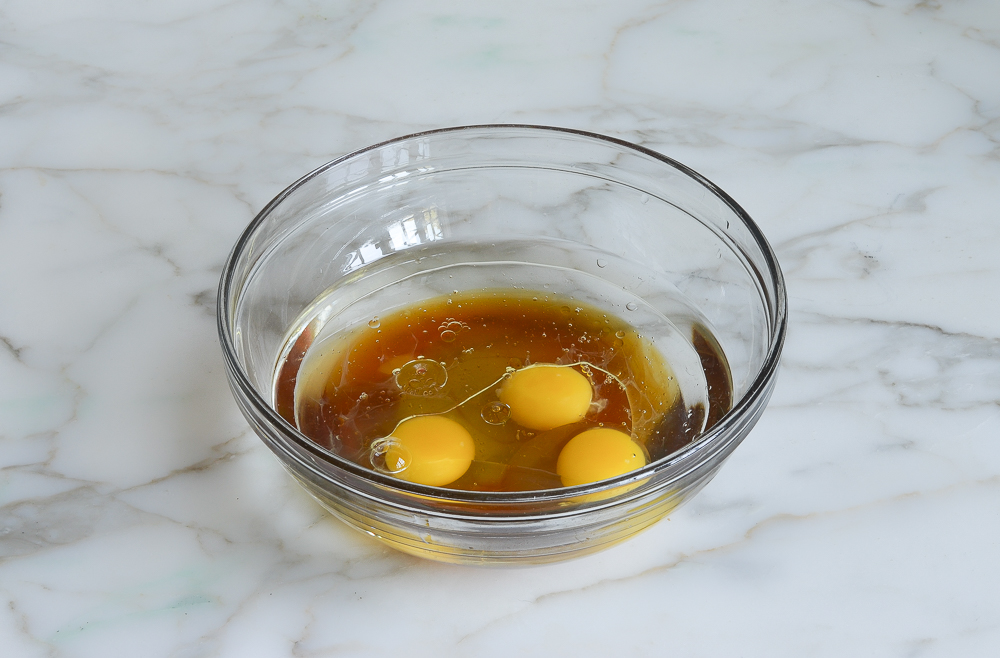
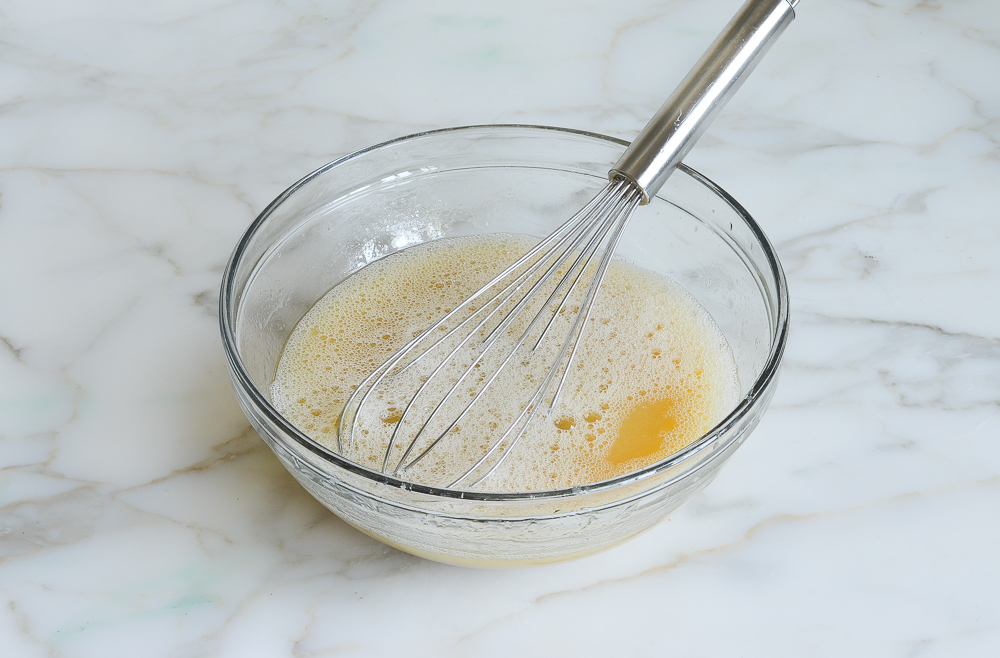
In a stand mixer fitted with the dough hook, combine the flour, yeast, and salt. Mix to combine.
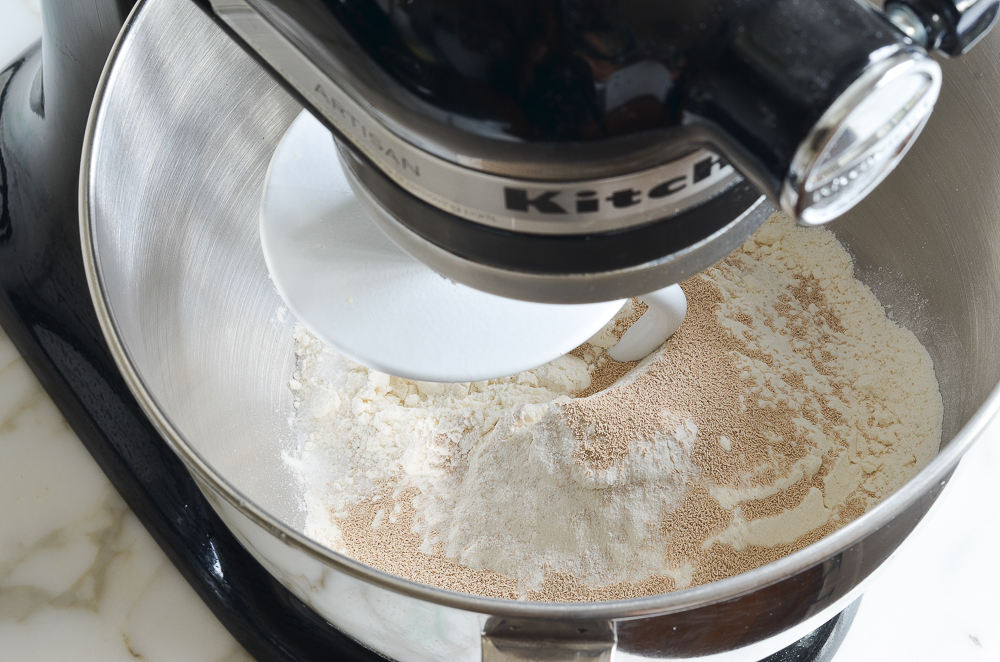
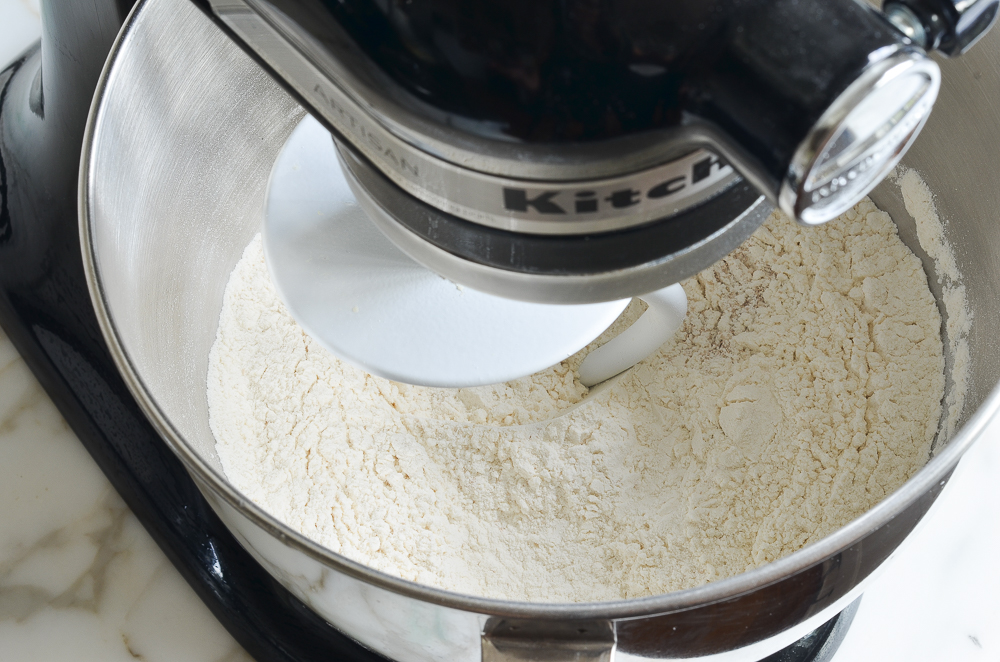
Add the liquid ingredients to the dry ingredients. Then knead on medium-low speed until you have a sticky dough that clings to the bottom of the bowl, 5 to 7 minutes. The dough may seem too wet but have faith—it’s supposed to be.
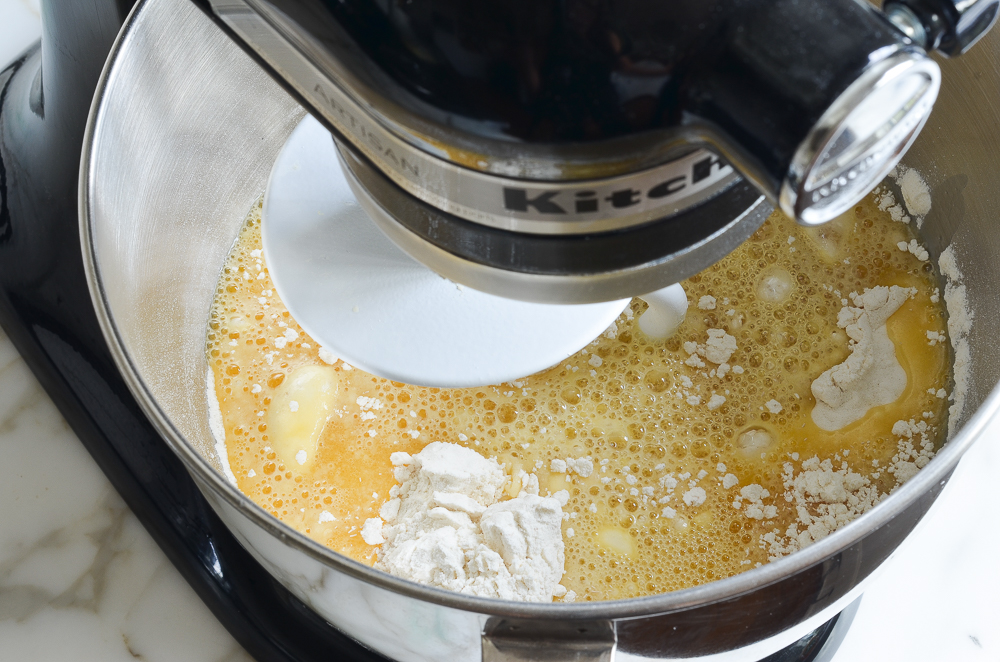
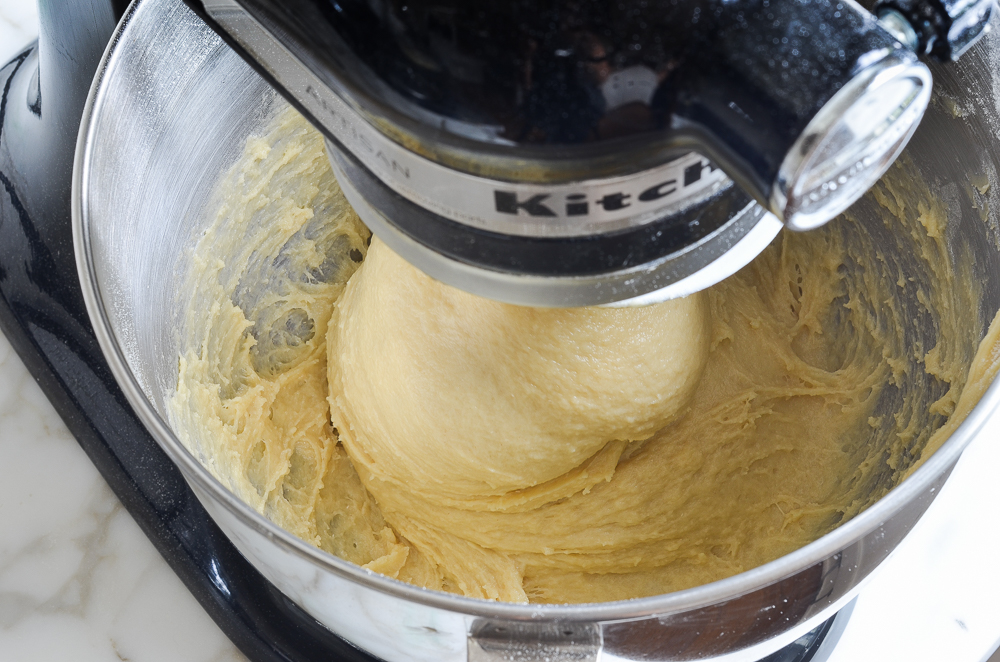
Dust your hands generously with flour, then scrape the sticky, elastic dough out onto a lightly floured work surface. Dust the top of the dough lightly with flour. Knead into a soft, smooth ball.
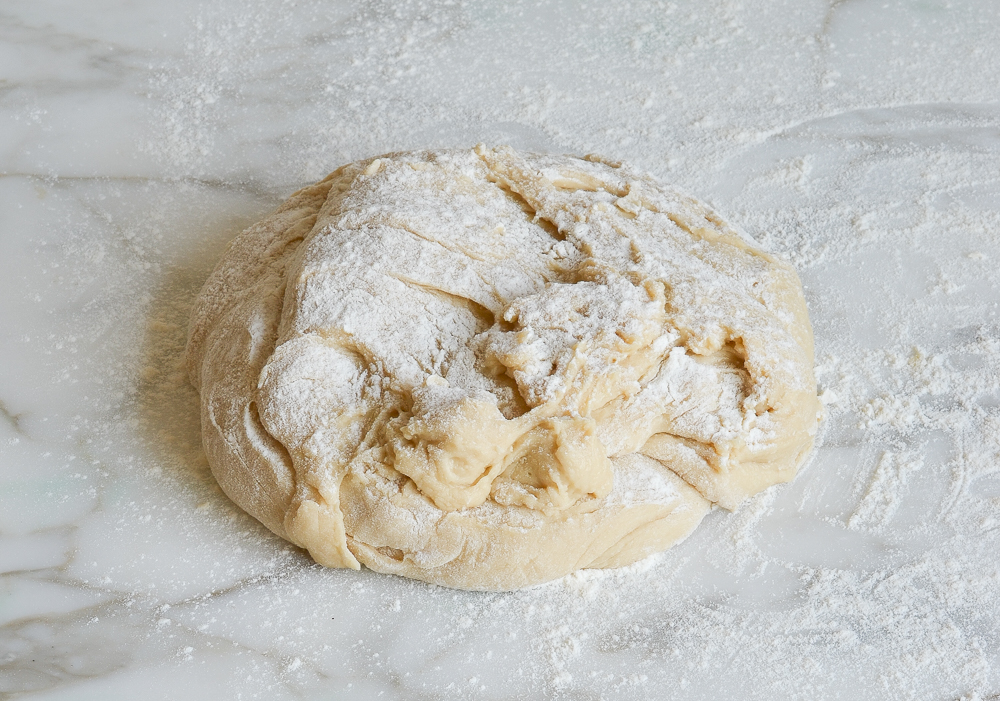
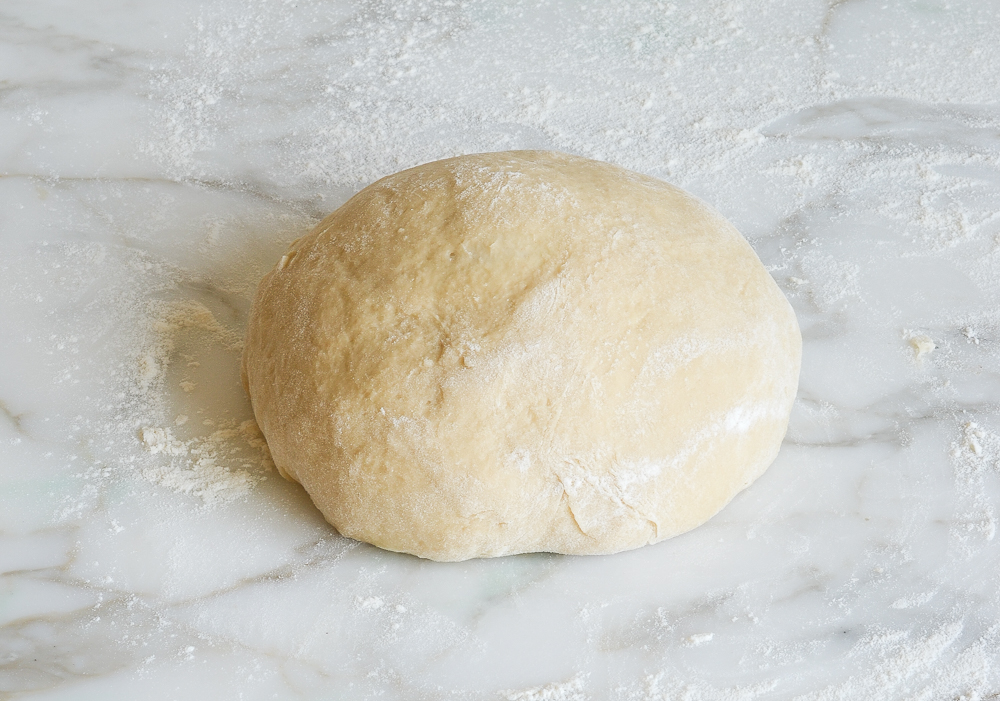
Step 2: Let it Rise
Lightly grease a large bowl with oil or nonstick cooking spray. Place the dough in the bowl, flip it over once so the top is lightly oiled, and then cover the bowl with plastic wrap. Allow the dough to rise in a warm, draft-free spot until it’s puffy and doubled in size, 2 to 3 hours. Keep in mind that when baking yeast breads, rising times are only a guide. The temperature in your kitchen, the humidity level outdoors, and how you knead the dough will all affect the rising time.
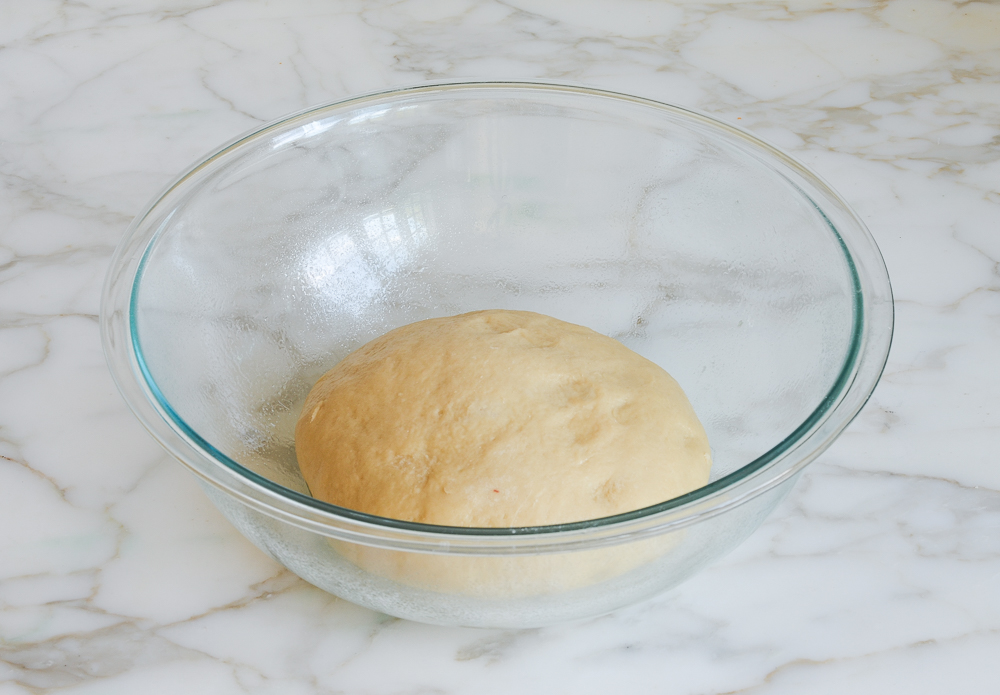

Step 3: Braid the Dough
If you have a little girl in your life, or were ever a summer camp counselor, you have an advantage with braiding challah. But even if not, I assure you it’s easy to do. There are dozens of methods, but I think this 4-strand braid is the easiest and the prettiest.
To begin, invert the risen dough onto a lightly floured work surface and dust with flour. It will deflate. Cut the dough into four even pieces. (If you want to be exact, each piece should weigh approximately 9 oz or 260 g.)
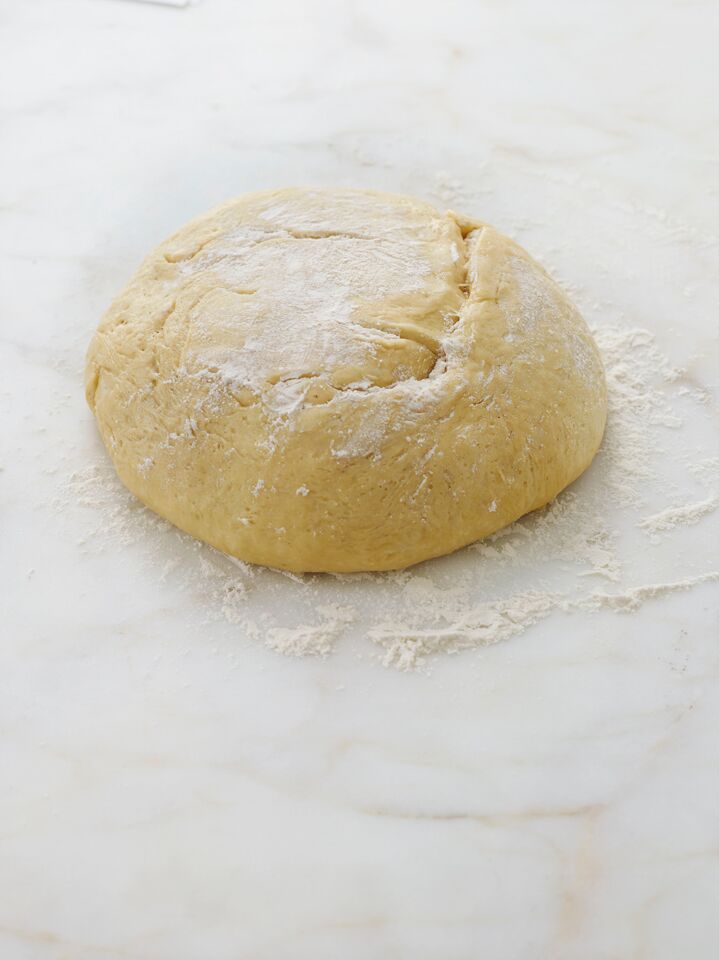
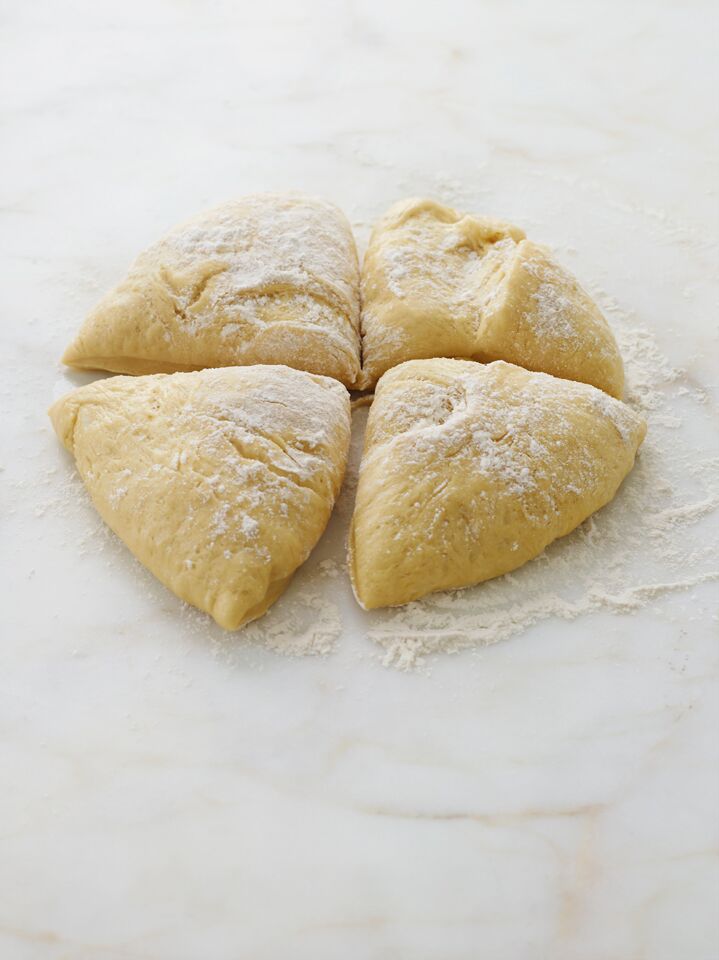
Stretch and roll each piece into a rope about 20-inches long. Lay the ropes parallel to one another (vertically). Pinch them tightly together at the top, and then fan them out. If the ropes shrink a bit, just work them back into their original length. Begin by taking the strand farthest to the right and weave it toward the left through the other strands using this pattern: over, under, over.
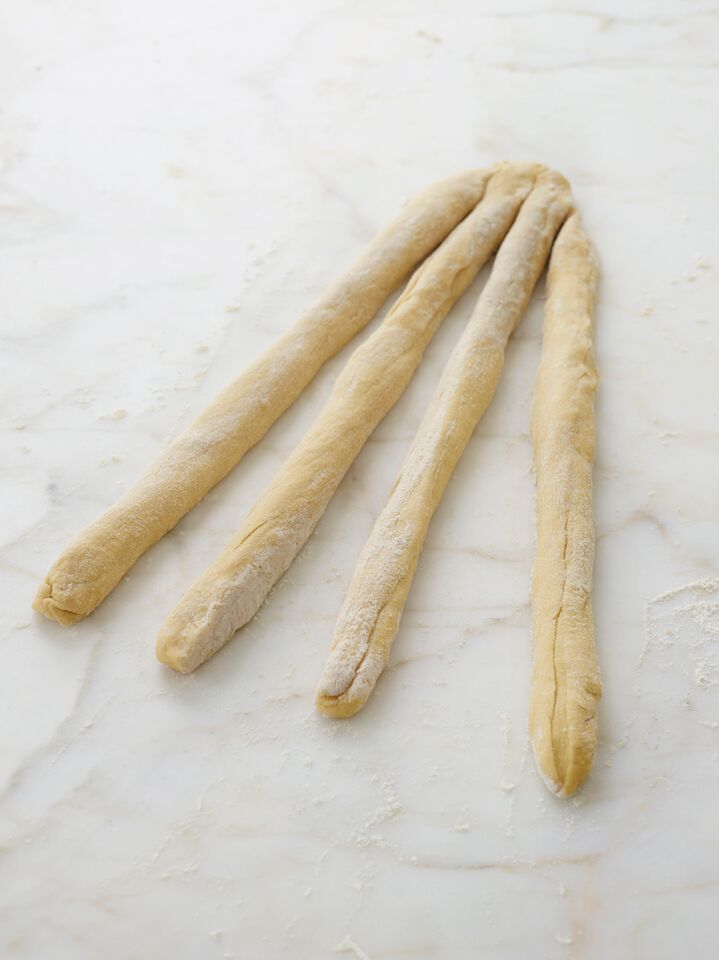
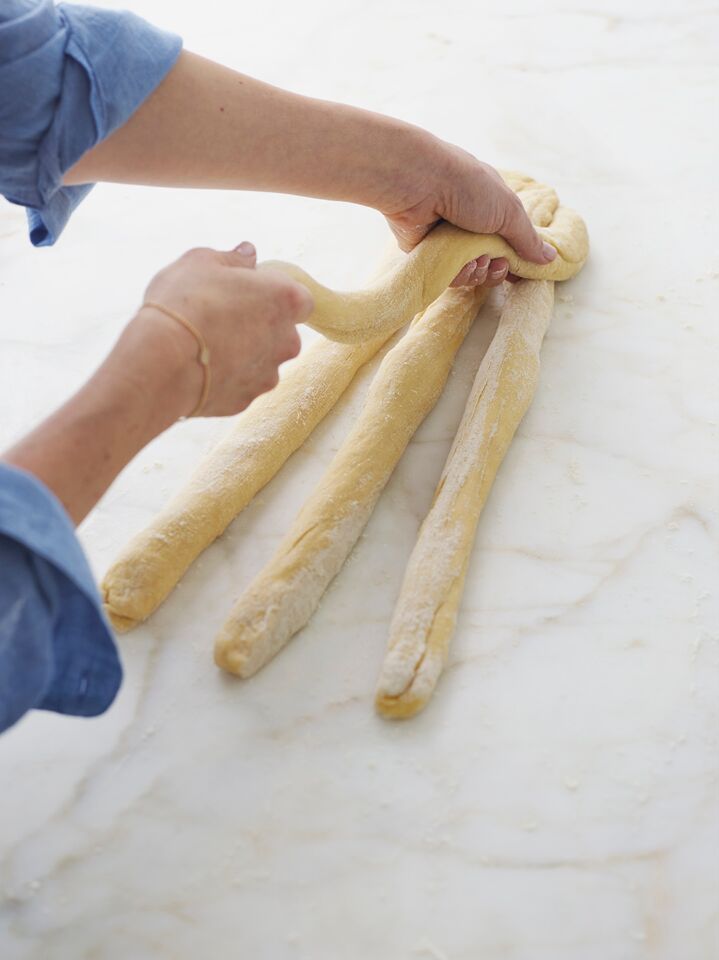
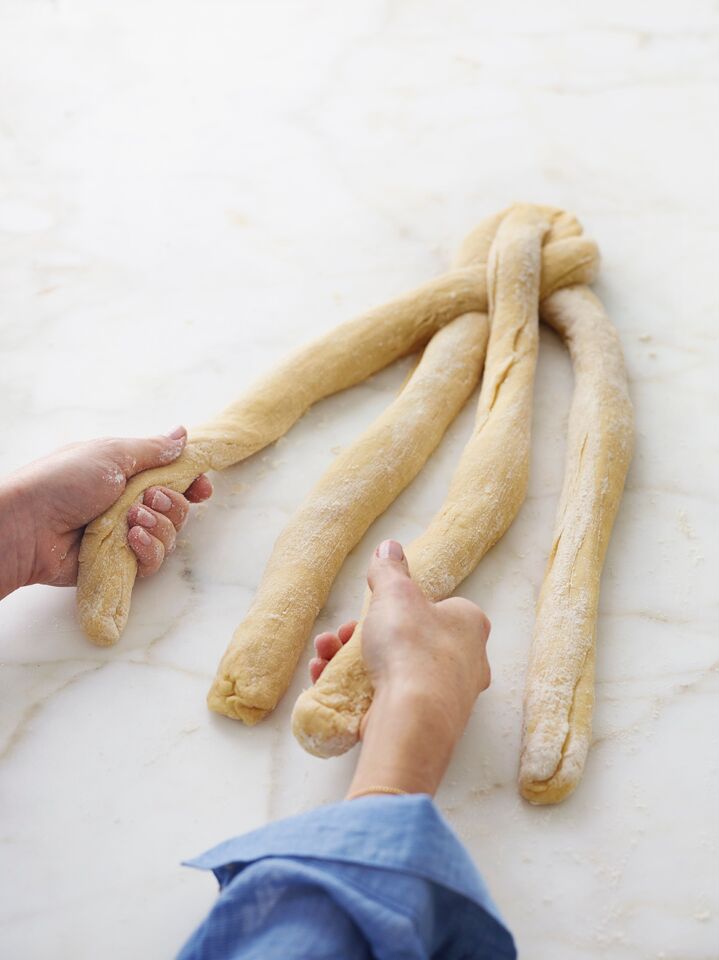
Take the strand furthest to the right and repeat the weaving pattern again: over, under, over.
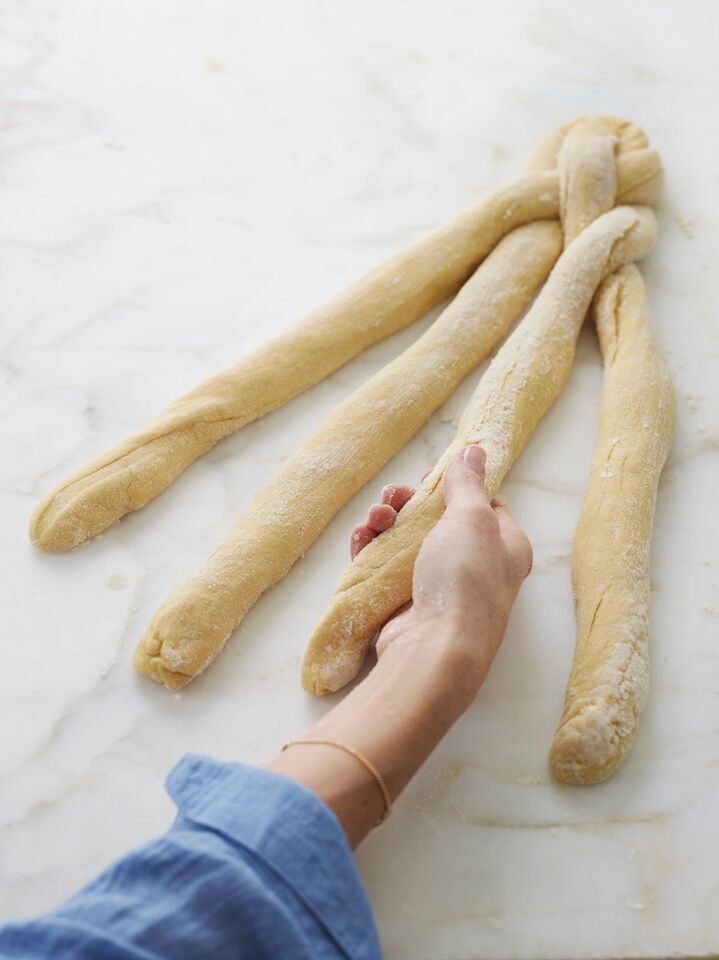
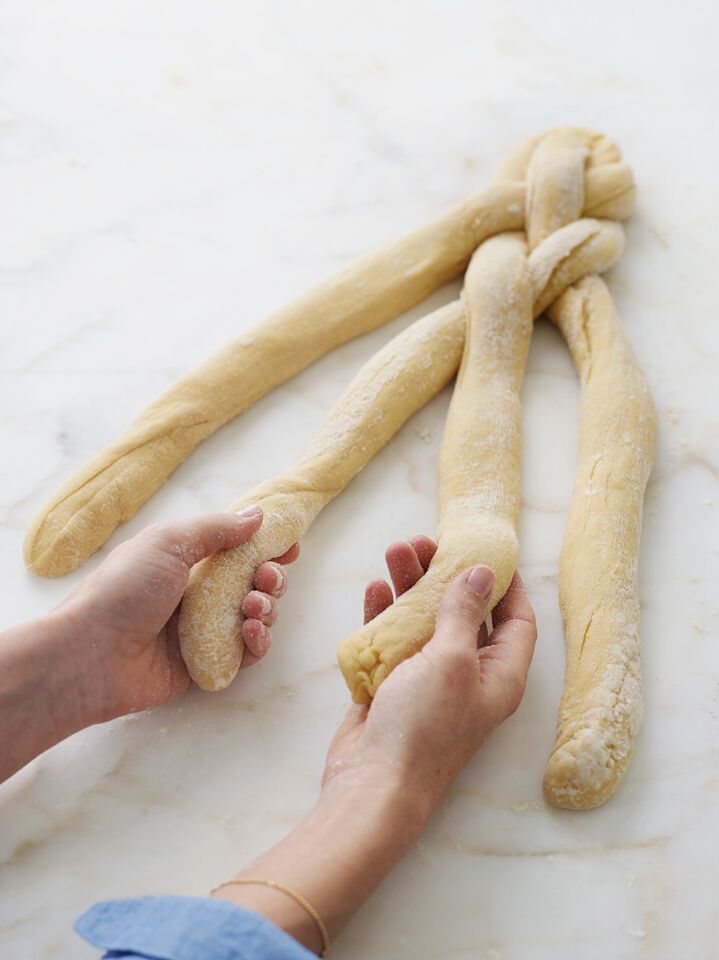
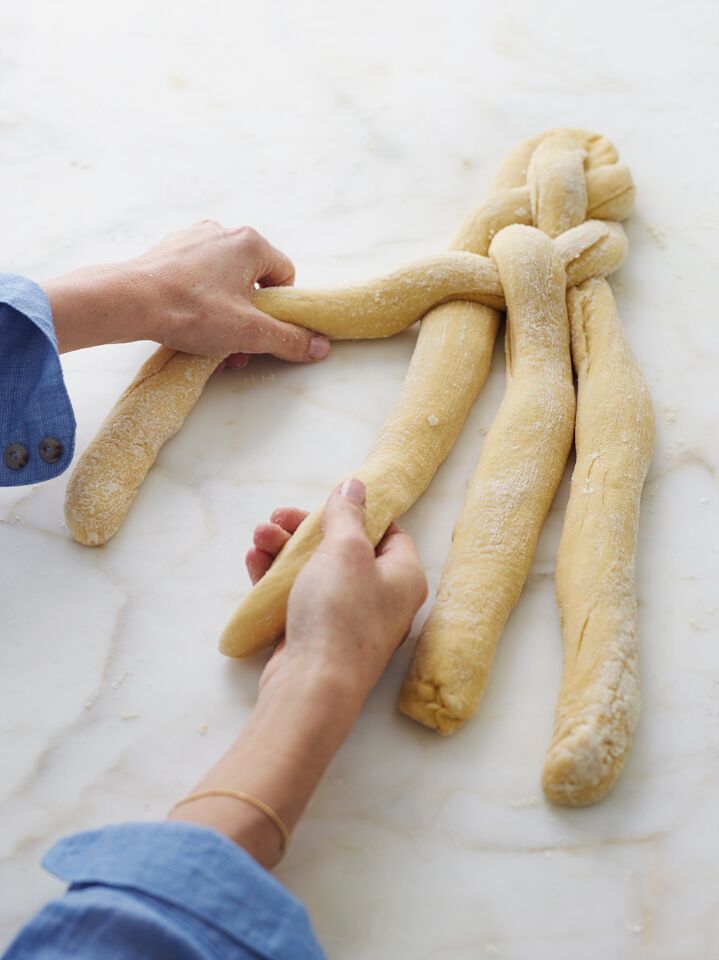
Repeat this pattern, always starting with the strand farthest to the right, until the whole loaf is braided.
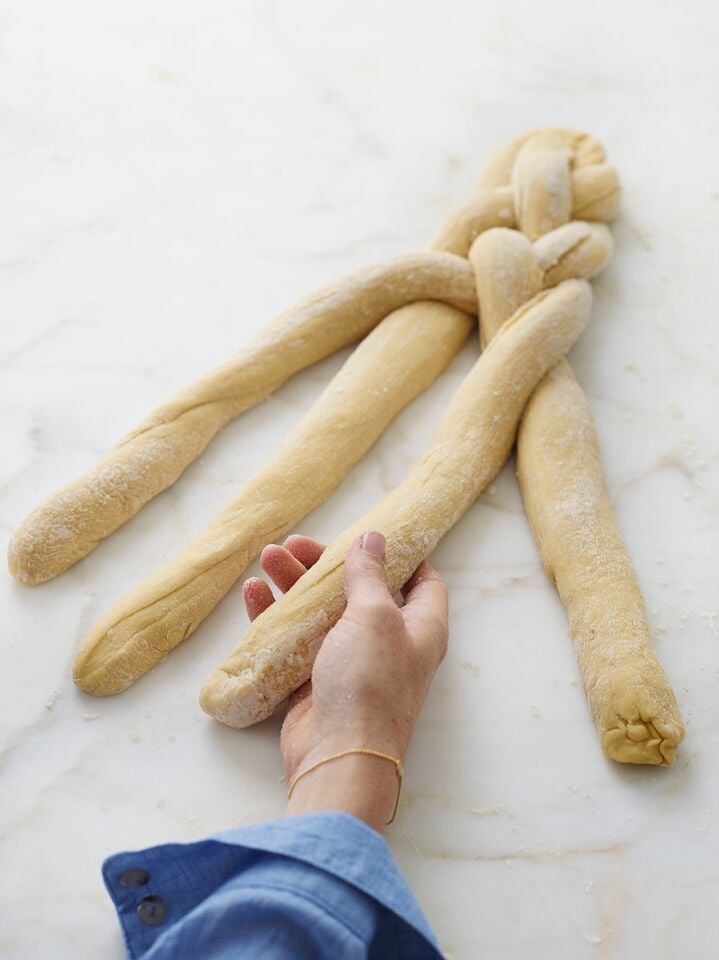
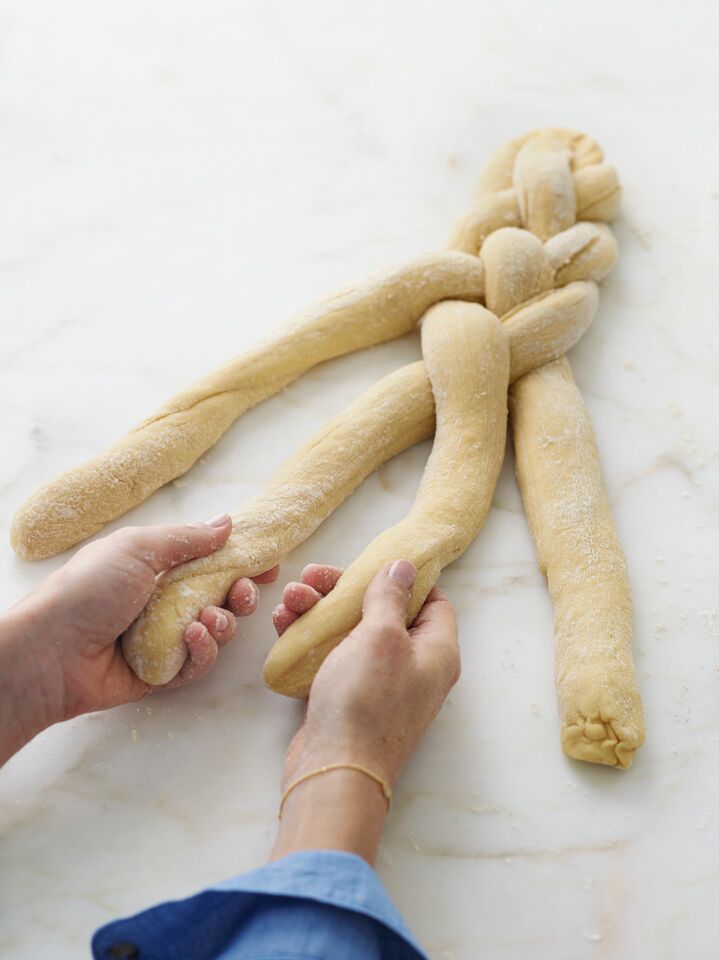
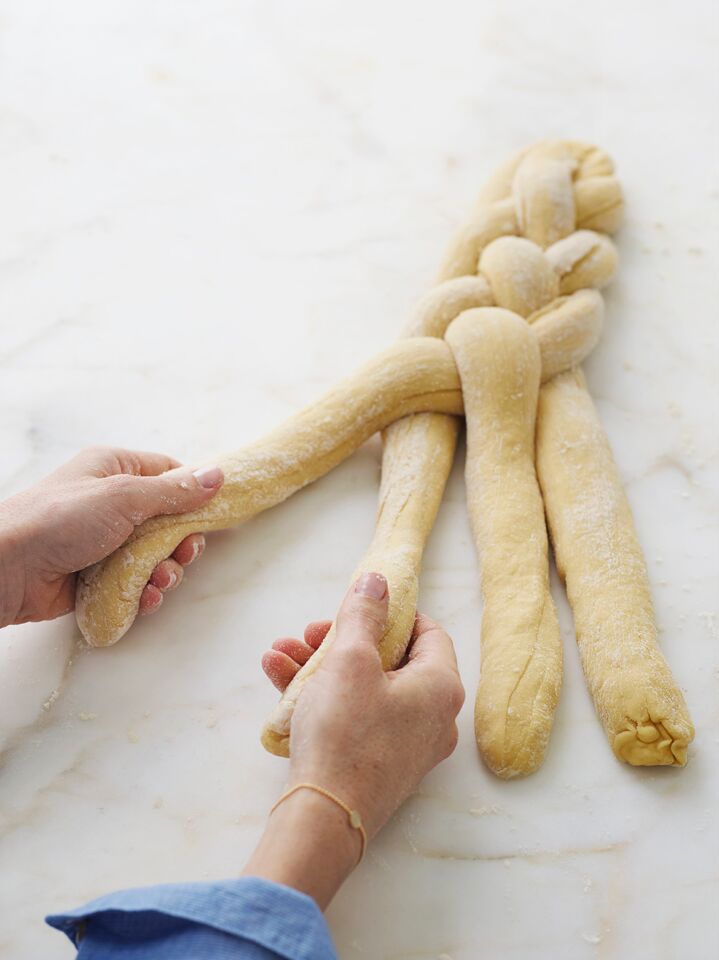
Tuck the ends under the loaf to give it a finished look.
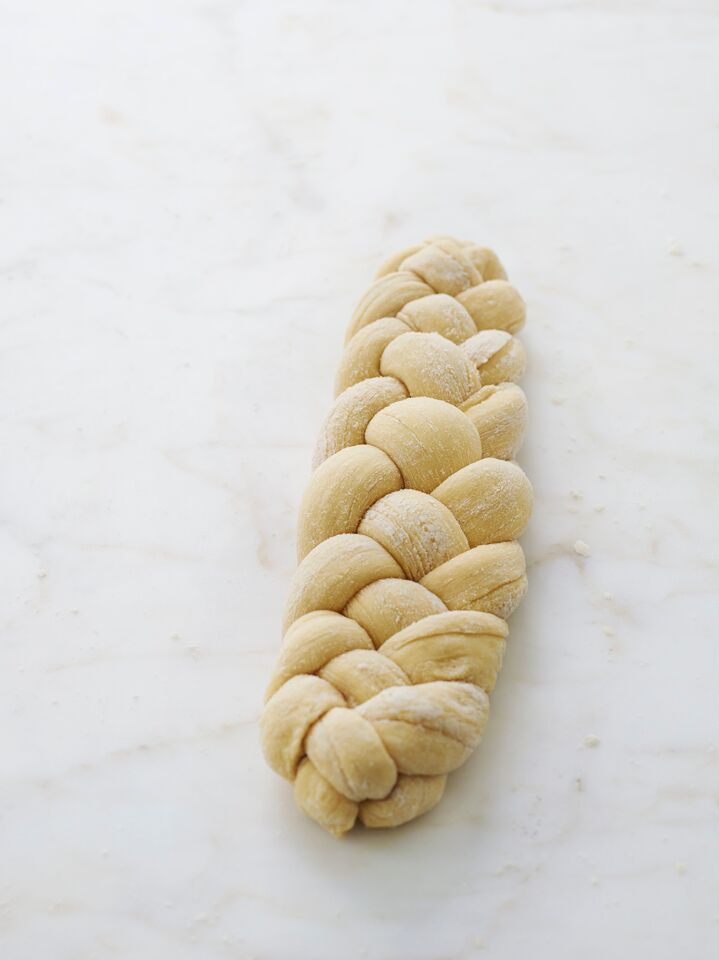
Step 4: Let the Braided Dough Rise
Carefully transfer the braided loaf to a parchment-lined 13 x 18-inch baking sheet. Cover the loaf loosely with plastic wrap and let it rise in a warm, draft-free spot until about 1.5 times the size, 1 to 2 hours. Toward the end of the rising time, preheat the oven to 350°F and set an oven rack in the middle position. (Note that the loaf will continue to rise a bit in the oven.) In a small bowl, beat the remaining egg and brush the beaten egg generously over the risen dough. (Note: If you like, sprinkle poppy or sesame seeds onto the challah before putting it in the oven.)
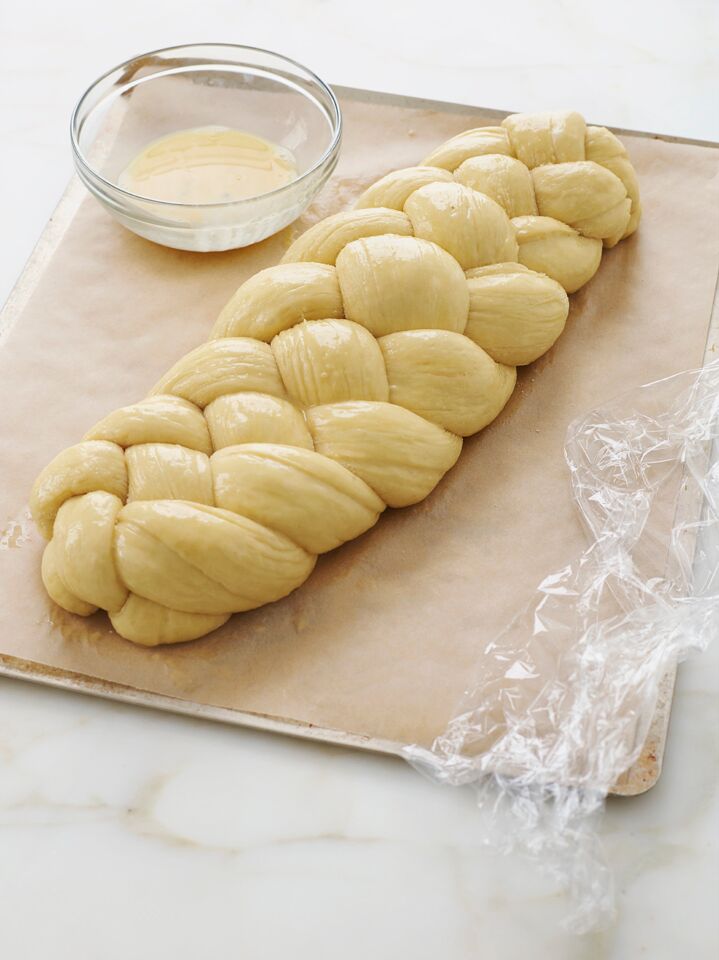
Step 5: Bake
Place the baking sheet atop another baking sheet; this will prevent the bottom crust from browning too much. Bake for 30 to 35 minutes, until the crust is a rich brown color and the internal temperature is between 190°F and 200°F on an instant-read thermometer. Remove the bread from the oven and place it on a rack to cool. Challah is best enjoyed fresh, but leftovers will keep for a few days in a sealed plastic bag.
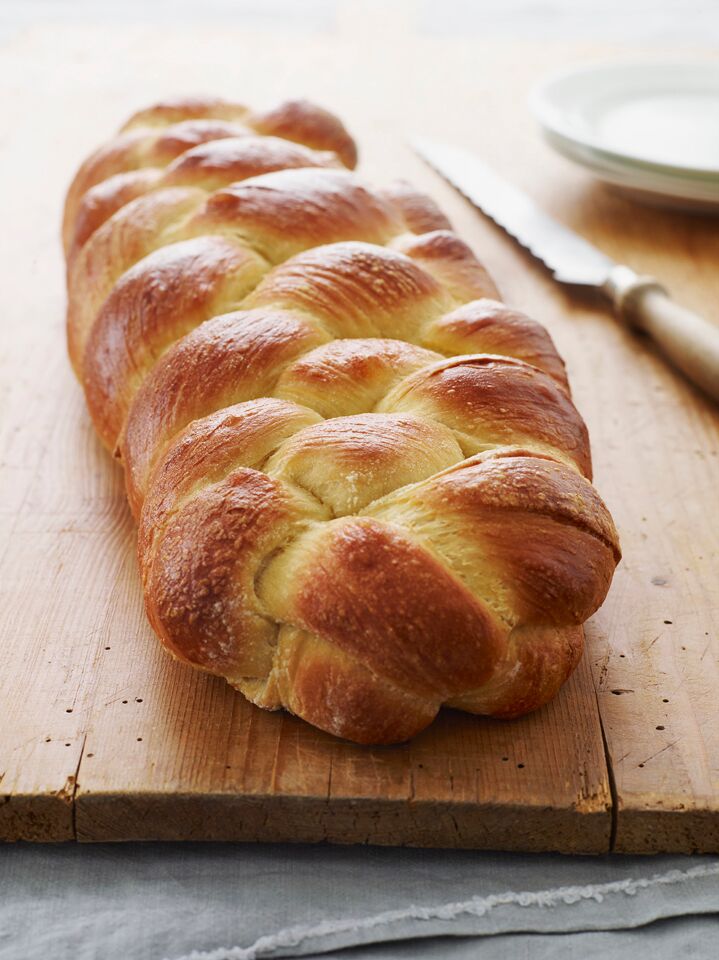
You May Also Like
Challah
With its rich, slightly sweet flavor, shiny golden crust, and pillowy interior, challah isn’t just for the Jewish holidays — it appeals to everyone, any time!
Ingredients
- 4¼ cups all-purpose flour, spooned into measuring cup and leveled-off, plus more for dusting
- 1 tablespoon instant/rapid-rise yeast (see note)
- 2 teaspoons salt
- ¾ cup lukewarm water
- ¼ cup + 2 tablespoons vegetable oil
- ¼ cup + 2 tablespoons honey
- 3 eggs, at room temperature
- 1 egg yolk, at room temperature
Instructions
- In a stand mixer fitted with the dough hook, combine the flour, yeast, and salt. Mix on low speed for 30 seconds to combine. In a separate bowl, combine the lukewarm water, oil, honey, 2 of the eggs, and the egg yolk. Add to the dry ingredients and knead on medium-low speed until you have a sticky dough that clings to the bottom of the bowl, 5 to 7 minutes. The dough may seem too wet but have faith—it’s supposed to be.
- Dust your hands generously with flour, then scrape the sticky, elastic dough out onto a lightly floured work surface. Dust the top of the dough lightly with flour and knead briefly into a soft, smooth ball. Lightly grease a large bowl with oil or nonstick cooking spray. Place the dough in the bowl, flip it over once so the top is lightly oiled, and then cover the bowl with plastic wrap. Allow the dough to rise in a warm, draft-free spot until it's puffy and doubled in size, 2 to 3 hours.
- Invert the dough onto a lightly floured work surface and dust with flour. It will deflate. Cut the dough into four even 9-oz pieces, and then stretch and roll each piece into a rope about 20-inches long. Lay the ropes parallel to one another (vertically). Pinch them tightly together at the top, and then fan them out. If the ropes shrink a bit, just work them back into their original length.
- Begin by taking the strand farthest to the right and weave it toward the left through the other strands using this pattern: over, under, over. Take the strand furthest to the right and repeat the weaving pattern again: over, under, over. Repeat this pattern, always starting with the strand farthest to the right, until the whole loaf is braided. Tuck the ends under to give the loaf a finished look.
- Carefully transfer the braided loaf to a parchment-lined 13 x 18-inch baking sheet. Cover the loaf loosely with plastic wrap and let it rise in a warm, draft-free spot until about 1.5 times the size, 1 to 2 hours. Toward the end of the rising time, preheat the oven to 350°F and set an oven rack in the middle position. (Note that the loaf will continue to rise significantly in the oven.)
- In a small bowl, beat the remaining egg and brush the beaten egg generously over the risen dough. (Note: If you like, sprinkle poppy or sesame seeds onto the challah before putting it in the oven.) Place the baking sheet atop another baking sheet; this will prevent the bottom crust from browning too much. Bake for 25 to 35 minutes, until the crust is a rich brown color and the internal temperature is between 190°F and 200°F on an instant-read thermometer. Remove the bread from the oven and place it on a rack to cool. Challah is best enjoyed fresh, but leftovers will keep for a few days in a sealed plastic bag.
- Note: If you're using yeast that comes in the packets, the quantity required for this recipe (1 tablespoon) is more than one packet.
- Note: Active dry yeast may be used instead of instant/rapid-rise yeast, however, the dough will take longer to rise.
- Note: When baking yeast breads, rising times are only a guide; the temperature in your kitchen, the humidity level outdoors, and how you knead the dough will all affect the rising time.
- Make-Ahead Instructions: Prepare the loaf up to the point where it's braided and on the pan. Cover it with greased plastic wrap, and place it in the refrigerator overnight. The next day, remove the braided dough from the refrigerator and set it on the countertop (keep it covered). Let it come to room temperature and rise for about 1 hour before baking as directed.
- Freezer-Friendly Instructions: Challah can be baked, cooled, tightly wrapped, and frozen for up to 3 months. Allow it to thaw at room temperature for at least 3 hours before serving.
Nutrition Information
Powered by ![]()
- Per serving (16 servings)
- Serving size: 1 slice
- Calories: 206
- Fat: 7 g
- Saturated fat: 1 g
- Carbohydrates: 32 g
- Sugar: 7 g
- Fiber: 1 g
- Protein: 5 g
- Sodium: 126 mg
- Cholesterol: 35 mg
This website is written and produced for informational purposes only. I am not a certified nutritionist and the nutritional data on this site has not been evaluated or approved by a nutritionist or the Food and Drug Administration. Nutritional information is offered as a courtesy and should not be construed as a guarantee. The data is calculated through an online nutritional calculator, Edamam.com. Although I do my best to provide accurate nutritional information, these figures should be considered estimates only. Varying factors such as product types or brands purchased, natural fluctuations in fresh produce, and the way ingredients are processed change the effective nutritional information in any given recipe. Furthermore, different online calculators provide different results depending on their own nutrition fact sources and algorithms. To obtain the most accurate nutritional information in a given recipe, you should calculate the nutritional information with the actual ingredients used in your recipe, using your preferred nutrition calculator.

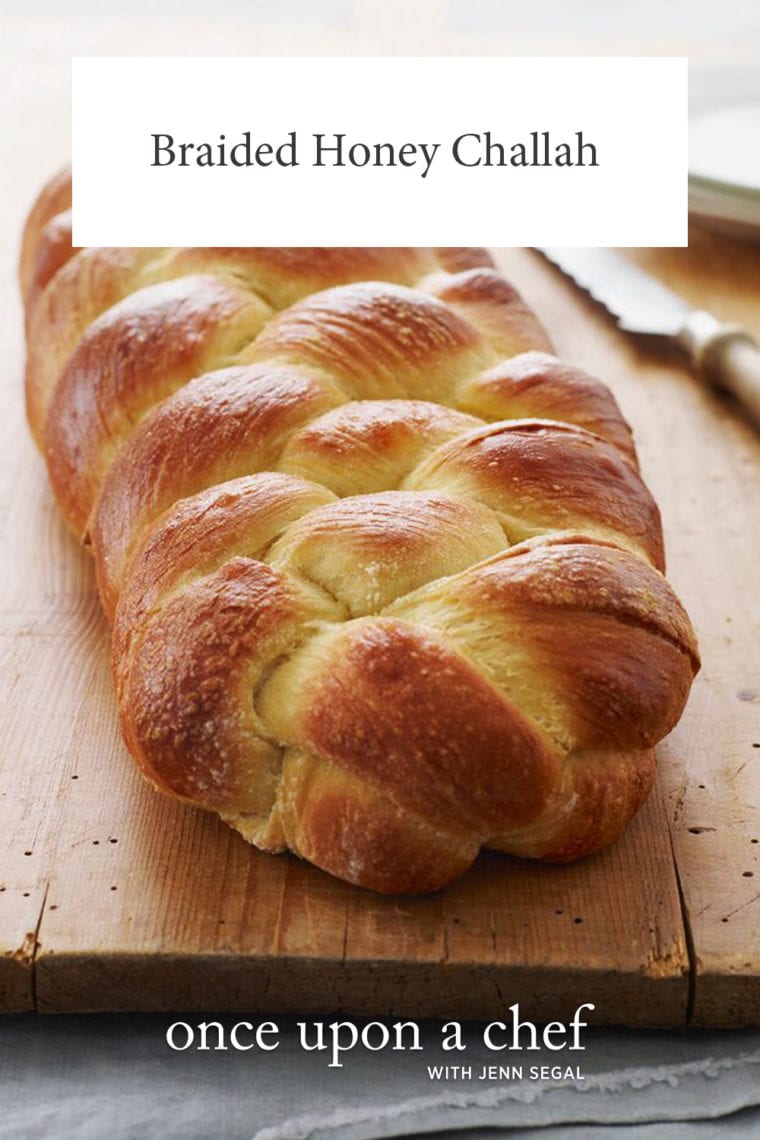
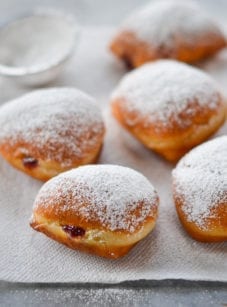
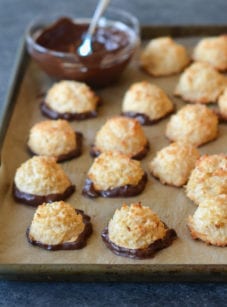
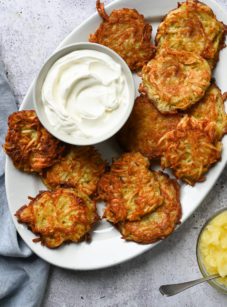
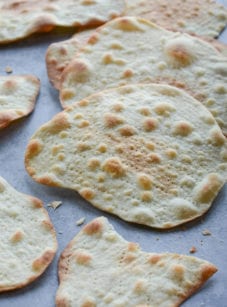
This is an easy for follow recipe and outcome is both delicious and beautiful. I added raisins to mine, my husband loves it that way.
I have never made challah before, I have always been intimidated. I saw your recipe and decided to go for it. It was simple, easy and so delicious. This will definitely be a staple in our house. I made your yummy potato leek soup with it, it was a great Friday night dinner🍞🥣
I have never made bread before and found this recipe easy to follow and easy to do. I often use what I have on hand so instead of just sesame seeds I used everything but salt Mrs. Dash.
Can I use unbleached all-purpose flour?
Yep – hope you enjoy!
Hi, I’m hoping to bake this tomorrow. Question, what effect would adding 1 extra yolk do? As I tend to prefer not to use egg yolk in the egg glaze, only the white- so essentially I’d have a spare. Next question, can I use white bread flour instead of plain/AP flour? Sorry- third, is an American tbsp 15 or 10ml? Thank you so much!
Hi Emma, you can use an extra yolk but it will make the dough a little wetter/stickier so you may need to add a tiny bit more flour. I would not recommend using bread flour for this; for best results, I’d stick to all-purpose.
And the great majority of my recipes (including this one) include conversions to metric/weight measurements. To view them, scroll down to the recipe, and immediately under the recipe title on the right side, you’ll see a little toggle. If you move it from “cup measures” to metric, you’ll see measurements that will work for you. Hope that helps!
Hi Jenn!! I’m excited to try this recipe, it’s proving now… but it was SO sticky and slack that it was difficult to knead. Should I add flour until it stops being sticky? I kneaded and kneaded, but it remained difficult to work with. It never got into a smooth ball. I used Gold Medal unbleached all-purpose. I don’t believe I mis-measured anything. I would love a video of you making this!! PS – Thank you, I love all your recipes!! : )
Hi Renee, It’s a sticky dough, but it’s fine to add a little more flour if necessary. Gold Medal is lower in protein than King Arthur (which is what I use), so it makes sense that you’d need to add a bit more. Hope that helps!
Thanks Jenn! It turned out great! The taste and texture were great, visually it just lacked definition with the braid. I’ll try to add extra flour next time… because I will definitely be making this again!
First time making challah bread and it has, worked brilliantly. Easy to follow step by step instructions. It’s delicious! Thank you.
Easy to follow recipe! Tastes and looks amazing!
This challah is light and has the perfect pull-apart quality! This is the BEST of several recipes I’ve tried over the years!
Hi all; what temperature should I be proofing the Challah dough at? (I’m pretty sure I’ve been over-proofing but opinions online for this are kind of all over the place.) And, is there a proofing temp difference for instant vs active dry yeasts? Thanks!
Hi Evan, I just looked this up because I’ve never known exactly what the temperature is of the spot I use to proof. King Arthur (a resource I really trust), suggests 75°F to 78°F. You can read more here. Hope that helps!
Thanks Jenn for another wonderful recipe. I have been baking bread just for the past 10 months, but quite a lot of it. Something about the kneading is therapeutic and I actually enjoyed the process of braiding. I made this for a neighbour who is going through a rough patch and she just called to say that this was the most amazing bread and what is in it that it tastes so different! Her family was “over the moon” with this loaf. I will be making this one again very soon so that I will have leftovers for French toast for Christmas breakfast!
I made this earlier this morning and WOW! It looks like a photo and the smell is intoxicating. The instructions were spot on and my dough looked just like yours. I feel it’s important to weigh ingredients when baking and always do it in grams for accuracy. I bake a lot and found this recipe to be simple enough for even a beginner. This will be my new go-to recipe for Challah!!